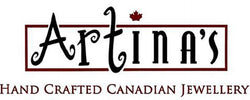The Orca | Indigenous Symbolism
ORCA SYMBOLIZES: LONGEVITY, PROTECTION, FAMILY
Orca has varying meanings across the Pacific Northwest. Each tribe, clan, and family has distinct and unique associations with Orca. Oftentimes, it is referred to as Killer Whale in many regards. In some areas, Killer Whale was once referred to as blackfish. Nowadays, artists use the names Orca or Killer Whale. Blackfish generally refers to a piolet whale, which is depicted similarly to Orca but with less prominent teeth and facial expressions. For the sake of consistency, we will refer to the animal as Orca.
All Indigenous symbols and crests have significant cultural and historical associations. Many of these symbols can represent the stories, traits, and values that hold a special significance to Indigenous Peoples. In retail jewellery, these symbols still hold significance but aren’t held to the same cultural standard. Regardless, we believe learning more about these legends' beauty and depth brings the wearer more pleasure.
In general, Orca symbolizes longevity, protection, and family. Among Northwest Coast people, Orca is held in the highest respect and has incredibly close ties to Indigenous Peoples.
Depictions of The Orca In Indigenous Art
In Indigenous Northwest Coast art and jewellery, Orca is depicted with a long snub-nosed head, elongated nostrils, and a wide and toothy mouth. Other details an artist may include are Orca’s blowhole, pectoral fins, tail, and dorsal fin. Within Indigenous jewellery, Orca may also be depicted through a single whale tail.

Among Haida, a double-finned Orca is a popular but challenging depiction. Showing Orca with multiple dorsal fins is a sign of divine entity. These supernatural Orcas may have up to five dorsal fins.
Orca is often drawn on canoes and other fishing paraphernalia. These depictions may include a human figure on Orca’s dorsal fin or an Orca captured by a Thunderbird.
Also Read: Thunderbird Symbolism | Indigenous Art & Jewellery
The Orca Symbolism
Orca is regarded with high respect among Northwest Coast Indigenous peoples and is represented heavily in Indigenous art and jewellery. They have many names including King of the Ocean or Wolf of the Sea. These animals often live their whole lives in the same pod, raising calves together. They are emblematic of family, dignity, strength, and community.
Among Northwest Coast people, Orca is closely related to wolves because they are physical manifestations of the same spirit. Both Wolf and Orca are renowned for their hunting skills, strength, intelligence, compassion, and devotion. In some legends, Orca may even come onto dry land as a Wolf to explore. Other legends claim that Orcas were once white-furred Wolves.
Also Read: Wolf Symbolism | Indigenous Art & Jewellery
The Orca In Northwest Coast Cultures
In the Pacific Oceans of Washington and British Columbia, there are four communities of Orcas. The smallest pod, The Southern Resident Killer Whale Pod, is only made up of 75 members and is protected under the Endangered Species Act. Orcas are said to be reincarnated chiefs who come to shore to take the chief’s spirit when they die.

Orcas have a close association with humans, particularly with the Indigenous Peoples of the Northwest Coast. Some legends claim that when a human drowns, Orcas take the human into deep underwater villages and transform the drowned human into an Orca. Some tribes believe that once in the underwater village, Orcas will remove their black and white skins to live like giant humans. Some even believe that Orcas will purposely capsize canoes to reunite with lost loved ones in the deep sea village.
Among the Haida, Sgaana xaaydagaay (killer whale people) are a group of Haida ancestors. Many legends tell of Sgaana xaaydagaay putting on Orca skins to enter their world, where they would visit, talk, and feast together.
See Haida artist Christopher Auchter's The Mountain of SGaana (2018) here!
Also read more on the Haida tradition of carving argillite.
3 products




